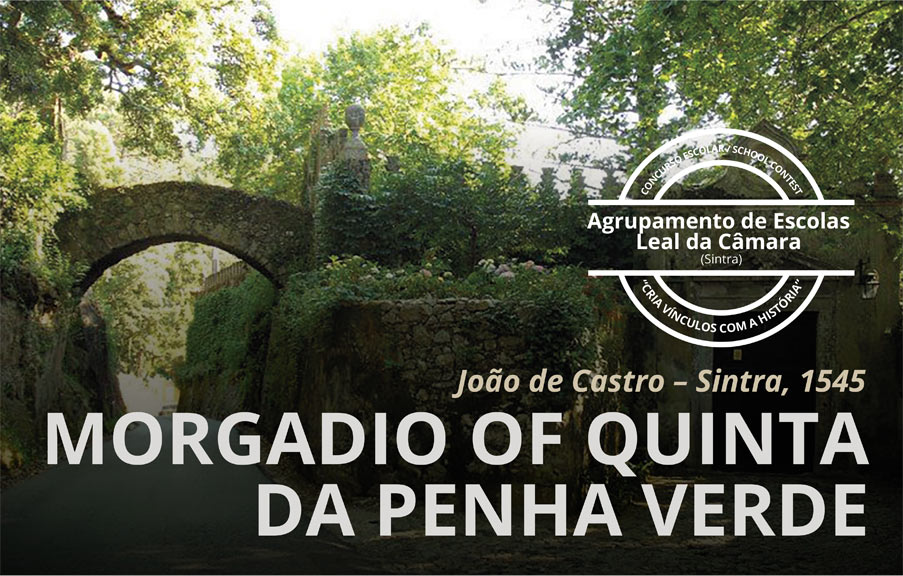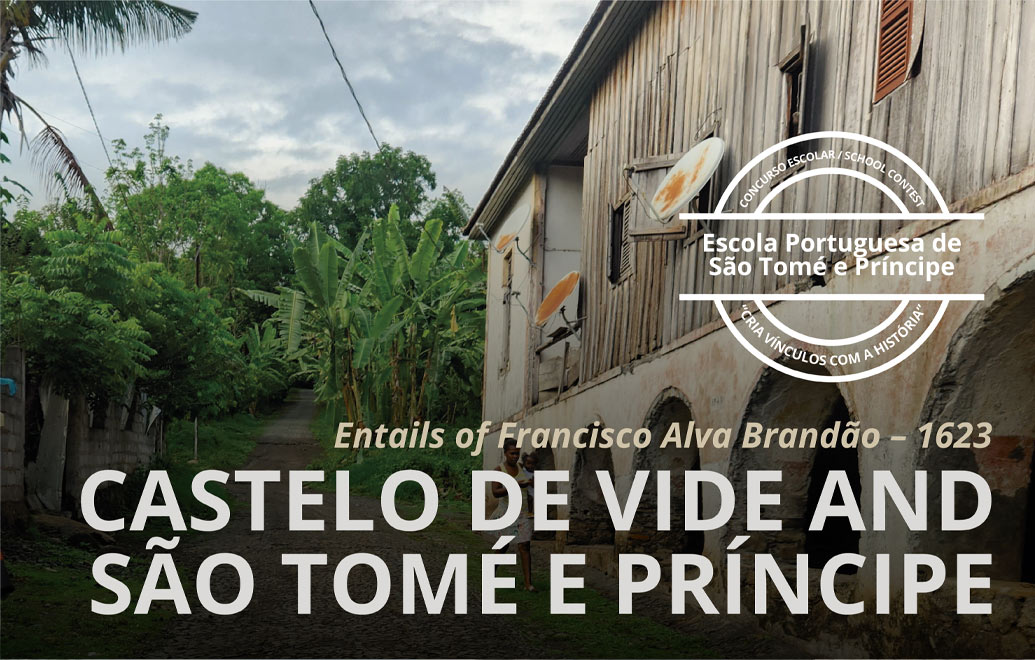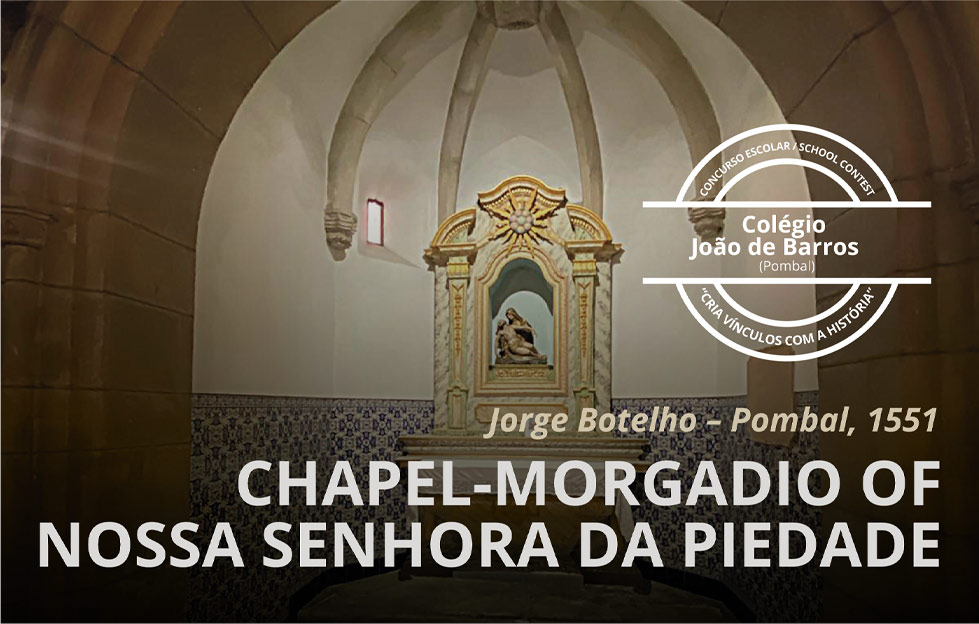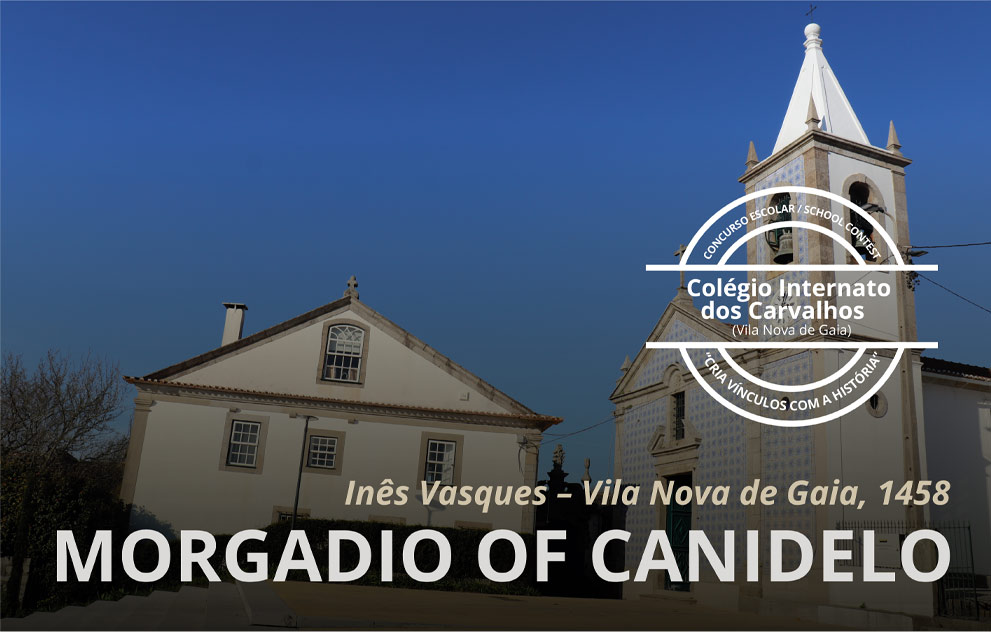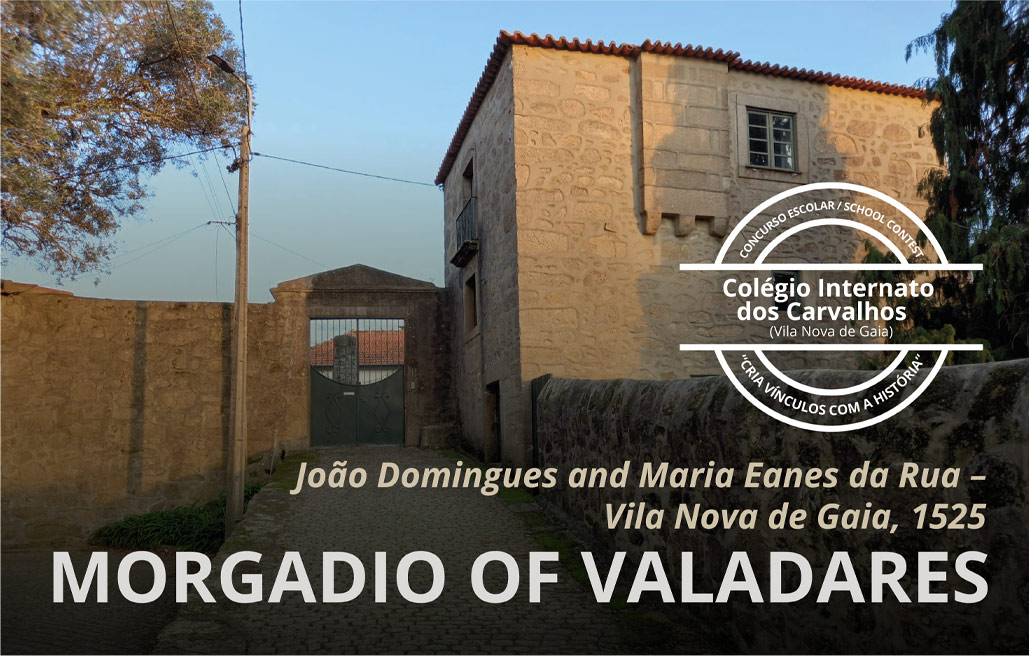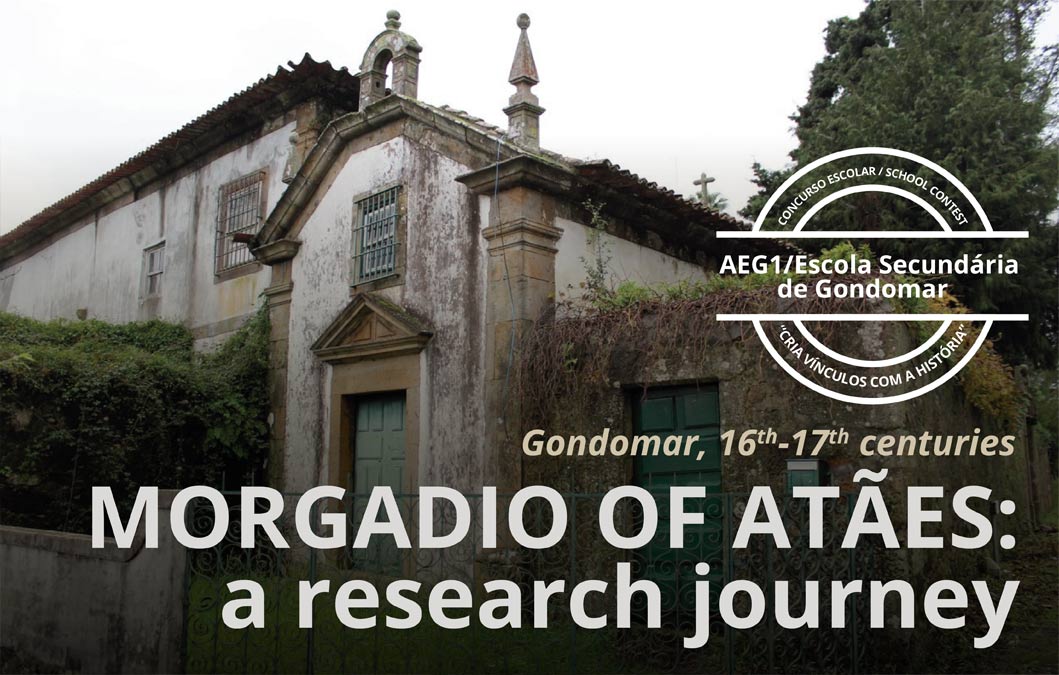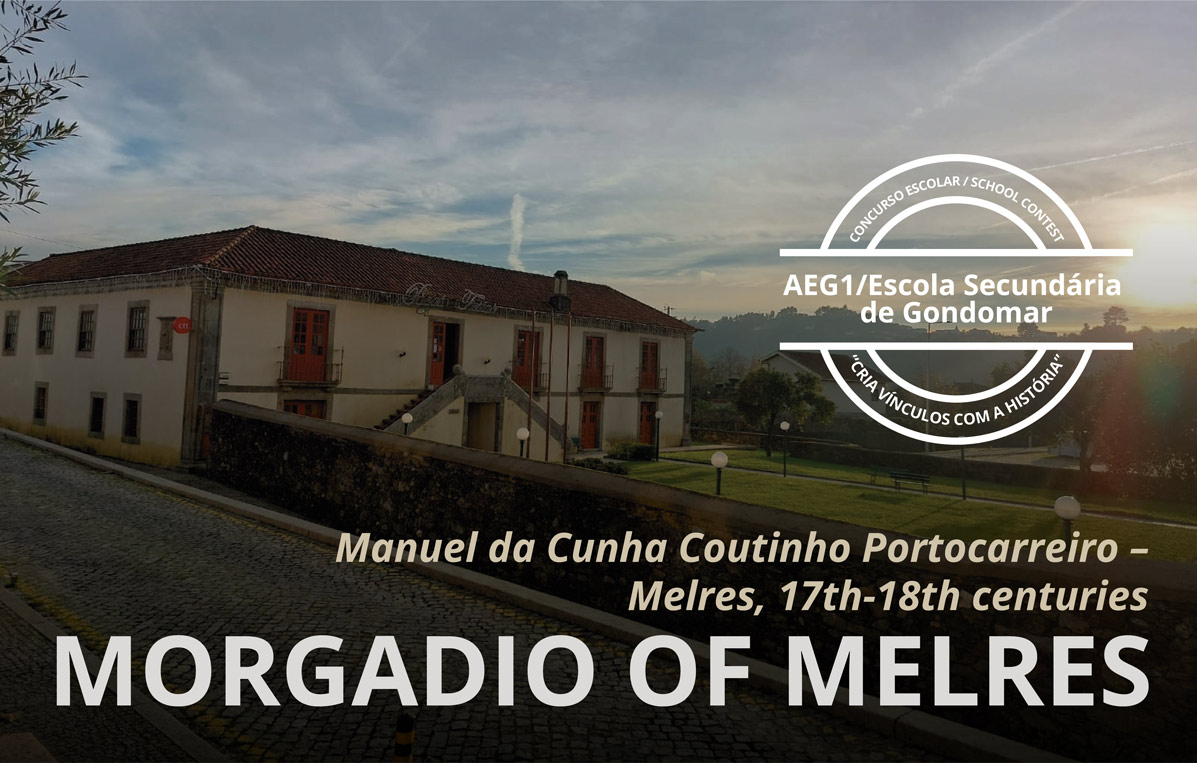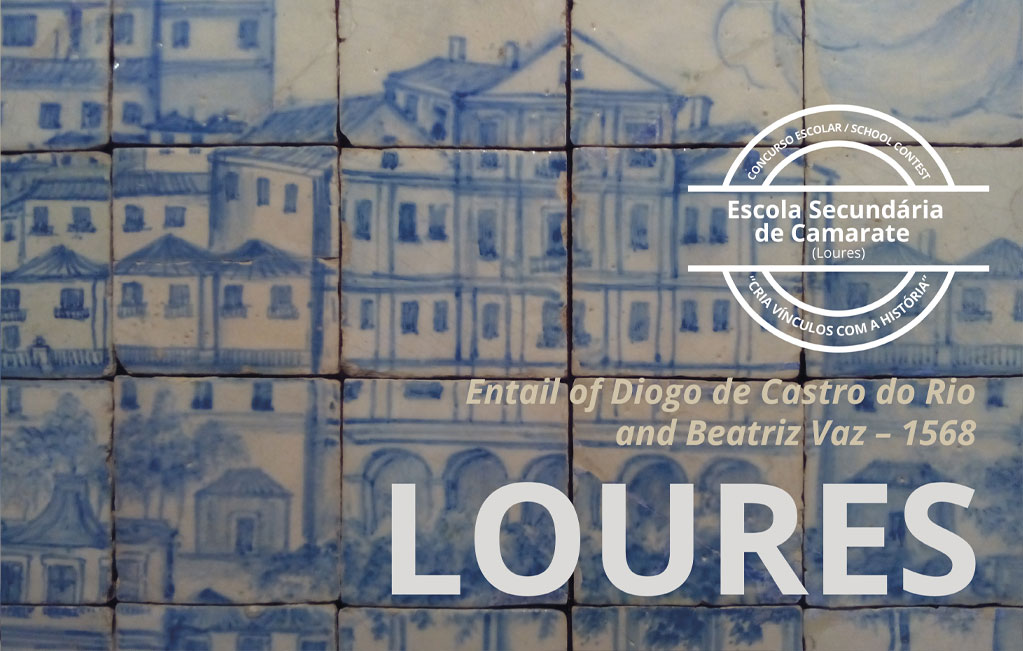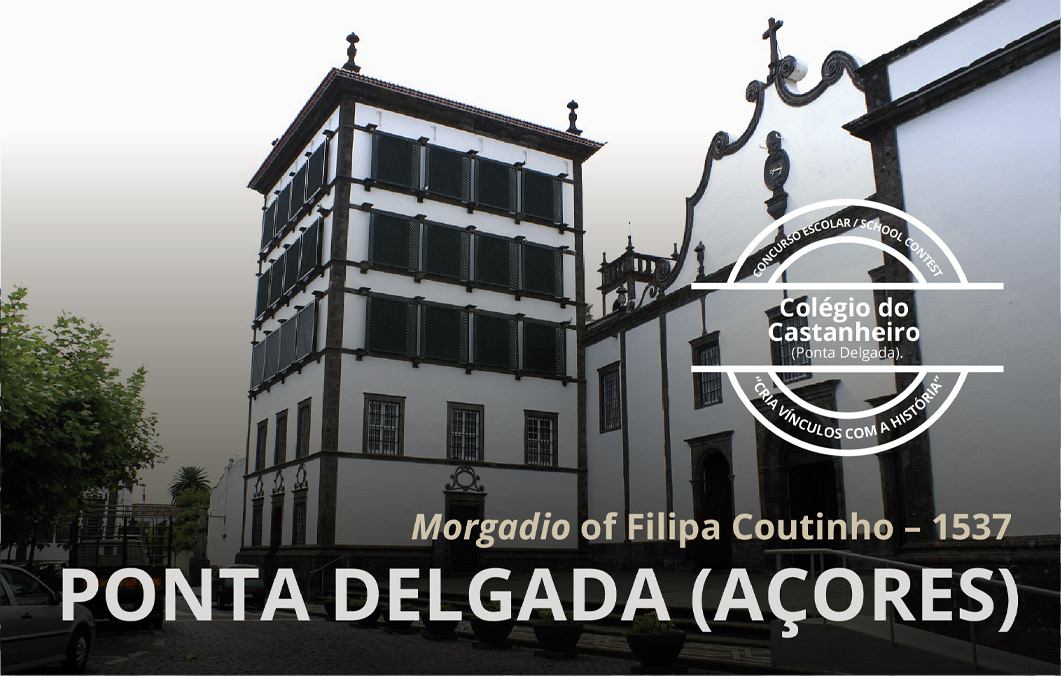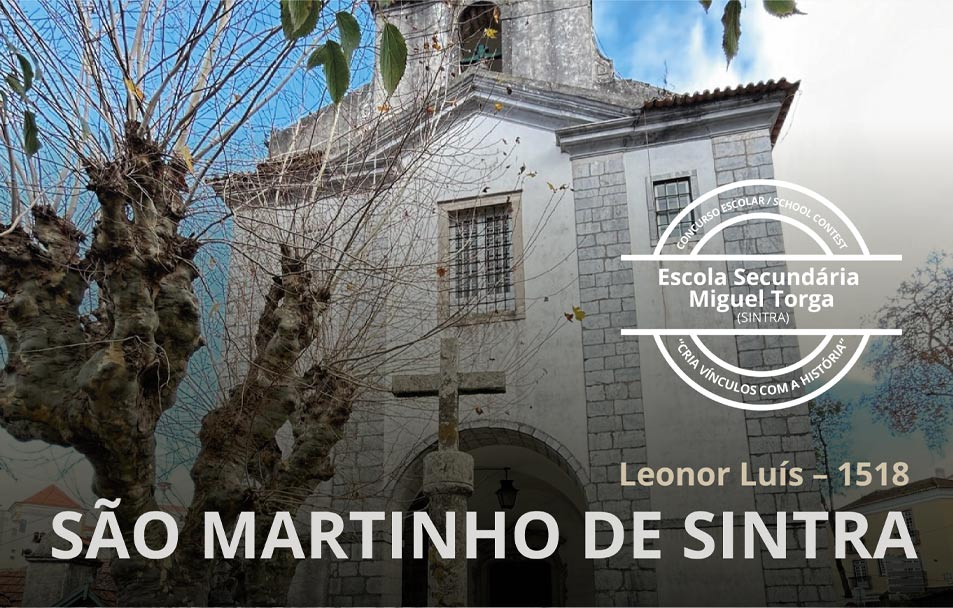Entail of the month (July, 2021)
Chapel of Nossa Senhora da Piedade, by Dionísio de Figueiredo
Canas de Senhorim, 1594
On 4 January 1594, the Jesuit Dionísio de Figueiredo drew up his last will in Goa. Before the witnesses had gathered in the Street of São Paulo, he gave alms to several religious houses in the city. Most importantly, he entrusted his sister, Filipa Gonçalves, and Filipa’s husband, Manuel Fernandes, with the administration of a chapel in honour of São Dionísio, in which an image of Our Lady of Mercy (Nossa Senhora da Piedade) was to be placed. The chapel was located in Canas de Senhorim (Nelas municipality). A plaque, that can still be seen, indicates that this chapel was completed three years after the writing of Dionísio’s will, making it the oldest in the municipality.
A former student of canon law in the University of Coimbra between 1583 and 1585 ((AUC – Universidade de Coimbra…, doc. 1491), Dionísio de Figueiredo (or Dionísio Fernandes, as he is named in this last source) died in Goa on an unknown date without ever having returned to Portugal. His will, however, did travel back and can be found in the manuscript collection of the house of the Viscounts of Midões, kept in the district archives of Viseu, where it is currently being catalogued.
The management of the chapel assets was shared between administrators, not always peacefully. The period under the second administrator, Manuel Fernandes de Figueiredo, was riddled with disputes over debt repayment, as well as occasional altercation, as demonstrated by a series of royal letters of pardon, issued between 1630 and 1633; by a deed filed in the notarial register of Lisbon; and by the dowry of Manuel’s daughter-in-law, Leonor de Abranches, that listed the amount of money which her husband, Manuel de Figueiredo Castelo Branco, owed to António de Abranches, Leonor’s father (TT – Instrumentos de Descrição, Índice de chancelaria de D. Filipe III: Perdões e legitimações: próprios, L91, sub verbis “Manuel Fernandes de Figueiredo”; Index das Notas, vol. 2, p. 122; ADV – Casa dos Viscondes de Midões, unnumbered doc.).
The same as with previous “Entails of the Month”, the administration of the chapel of Nossa Senhora da Piedade — or Canas, as the Parish Memories of 1755 name it (As freguesias, 2010, p. 388) — was part and parcel of the family’s wish to climb socially. This stimulated the founding of entails in the region and the appearance of new protagonists, who impressed a lasting mark in local history. Even since an early period, when the couple first started to administer the chapel, it became the practice of administrators — as may be detected in the administration of several other entails in the region — to buy rights to the collection of rents auctioned by the biggest local lay and religious landhonders, such as the counts of Sortelha and the cathedral chapter of Viseu (ADV – Cabido da Sé de Viseu, cx. 1, nr 104; TT – Arquivo Casa de Abrantes, m. 53, nr 978). Because such rents were additional to the patrimony comprised in entails, some of the tenants (many of them tied to trade) had a better chance of building up the region’s noble households of the eighteenth century.
This way, and also to safeguard the family finances, future chapel administrators reinforced the strategy of marrying into influential local families having their own entails to administer. It was the case with the Ribeiros de Abreu, whose entail, located in Midões, was brought into the family’s patrimony via the marriage of João de Abranches Castelo Branco, who was the 4th administrator. Therefore, the family group’s social ascent further consolidated. At the same time, the descendants of previous entail beneficiaries took on roles at the royal court, as judges and members of the Council of Conscience and Orders (Mesa da Consciência e Ordens). The 5th administrator, Filipe de Abranches Castelo Branco, and his successor, Luís de Abranches Castelo Branco, provide an example. In fact, Filipe de Abranches Castelo Branco went on to marry the heiress to the entail of Sardinhas, again extending the influence of the administrators of the chapel of Nossa Senhora da Piedade. In the mid-eighteenth century, the entail was transferred by inheritance to Roque Ribeiro de Abranches Castelo Branco, 1st viscount of Midões. A prominent liberal, after the 1820 revolution he was appointed a member of the Provisional Council of the Supreme Government of the Kingdom of Portugal (Junta Provisional do Governo Supremo do Reino) and later a peer of the realm.
On 8 November 1320, Estêvão da Guarda and his wife, Sancha Domingues, founded a chapel at the São Vicente de Fora Monastery, Lisbon. Two years later, a confirmation document details every aspect related to the chapel administration and worship (AML, 2003, p. 41). In fulfilment of the founders’ wishes, succession to the administration of the assets fell on the eldest male heir. Thus, after the death of Estêvão da Guarda, it fell on Álvaro Afonso, the grandson of Estêvão and Sancha.
However, the chapel and related properties remained in the lineage’s administration for only two generations. The disowning of the great-grandson, Diogo Álvares, in 1419 by order of João I, seems to indicate irregularities on the part of the founders’ successors (AML-AH, Chancelaria régia, Livro dos Pregos, doc. 285, ff. 200v-201v). For an extended period, the “problematic and troublemaking” administration was met with a lack of income, as attested by a document dated December 1513 (MARTINS, 1999, p. 11). This document reveals a poorly kept chapel, “so badly looked after that it looked abandoned” (AML-AH, Casa de Santo António, Livro da instituição da capela de Estêvão da Guarda, doc. 15; MARTINS, 1999, p. 12). For these reasons, on 26 July 1512, King Manuel ordered the senate of Lisbon’s municipal council to take possession of the chapel, and gave it the right to appoint and remove its administrators (AML-AH, Casa de Santo António, Livro da instituição da capela de Estêvão da Guarda, doc. 1, f. 5). It should be noted that the founders had foreseen the possibility that, in case there was no descendant in the family, the administration of the chapel would be handed over to a citizen of Lisbon, appointed by the city council (MARTINS, 1999, p. 28). This context serves to explain the fact that the municipality currently keeps most of the documentation relating to this entail. Thus, it is in Lisbon’s municipal archive (Arquivo Municipal de Lisboa) that both the will of the founders and the documents of the institution and ratification are preserved, transcribed in an eighteenth-century codex named “Livro da Instituição da Capella de Estevão da Guarda, e outras cartas (…)” (AML – AH, Casa de Santo António, Livro da instituição da capela de Estêvão da Guarda, docs. 1-16).
This period was important to spreading the Figueiredo surname in the families formed by the descendants of the chapel administrators, including the families of Figueiredo and Gouveia (lords of the Mouronho manor and captains of Coja), the Almeida Castelo Branco (from Canas de Senhorim), and the Sobral de Figueiredo (captains of Canas de Senhorim). Concerning the Almeida Castelo Branco family, which descended from Dionísio de Almeida Castelo Branco (son of the 2nd administrator), reference should be made to their instituting a morgadio in Canas de Senhorim. As it would be inherited by the Sobral de Figueiredo family, the morgadio was at the origin of the Abreu Madeira manor, one of the most important manors in the region (VIEIRA, s.d., p. 68). Consequently, an important part of the assets and documentation pertaining to the chapel of Nossa Senhora da Piedade was dispersed among several family groups tied to the founder’s descendants. The House of Aido is one such example. It was both property of the chapel and a producer of documents found today in the Archives of the House of Aido (MENDES et al., p. 116, 2019).
Although the estate that formed part of the entail remains private property to this day, the Nelas municipality’s Cultural Heritage Service is striving to restore from ruin the chapel that Dionísio de Figueiredo once founded. As part of the European Heritage Days, the municipality restored the chapel in 2019, turning it into a stage for that initiative. The interest shown by visitors may lead to the chapel becoming a museum and contributing to the appreciation of the local historical heritage (Municipality of Nelas, 2019).
Joana Soares, Maria Beatriz Merêncio, Mário Farelo, Tiago Mendes (in collaboration with Sérgio Manuel do Espírito Santo – Nelas Municipality)
With the collaboration of Nelas Municipality
Coordination: Rita Sampaio da Nóvoa
Arquivo da Universidade de Coimbra (AUC) – Universidade de Coimbra, Tratamento Arquivístico e comunicação de informação, Instrumentos de descrição, Índice de alunos da Universidade de Coimbra, Letra F, doc. 1491
Arquivo Distrital de Viseu (ADV) – Casa dos Viscondes de Midões, unnumbered doc.
Arquivo Distrital de Viseu (ADV) – Cabido da Sé de Viseu, cx. 1, nr 104
Arquivo Nacional da Torre do Tombo (TT) – Arquivo Casa de Abrantes, m. 53, nr 978
Arquivo Nacional da Torre do Tombo (TT) – Instrumentos de Descrição, Índice de chancelaria de D. Filipe III: perdões e legitimações: próprios, L91
As freguesias do Distrito de Viseu nas Memórias Paroquiais de 1758. Memórias, História e Património, coord. José Viriato Capela, Braga, CITCEM, 2010.
Index das notas de vários tabeliães de Lisboa (séculos XVI-XVIII), vol. 2, Lisbon, Biblioteca Nacional, 1937.
MENDES, Tiago Sousa; HENRIQUES, António Castro e FERROS, Manuel, “Public or perish: the family archives of Beira Alta (Portugal)”, in ROSA, Maria de Lurdes; NÓVOA, Rita Sampaio da; GAGO, Alice Borges; CÂMARA, Maria João (eds.), Recovered Voices, Newfound Questions: Family archives and historical research, Coimbra, Imprensa da Universidade de Coimbra, 2019, p. 111-126. Available at: https://hdl.handle.net/10316.2/47877 [accessed 17 June 2021].
Município de Nelas, “Uma viagem a 1579 à capela privada de Dionísio Figueiredo”, 4 de outubro de 2019. Available at: https://www.cm-nelas.pt/turismo-a-patrimonio/uma-viagem-a-1579-a-capela-privada-de-dionisio-figueiredo/ [accessed 17 June 2021].
VIEIRA, Maria João, “Casa Abreu Madeira. A joia de Canas de Senhorim” in Solares de Portugal, s.d. Available at: http://www.center.pt/imprensactr/imprensa_314.pdf [accessed 17 June 2021].
Other entails of the month



